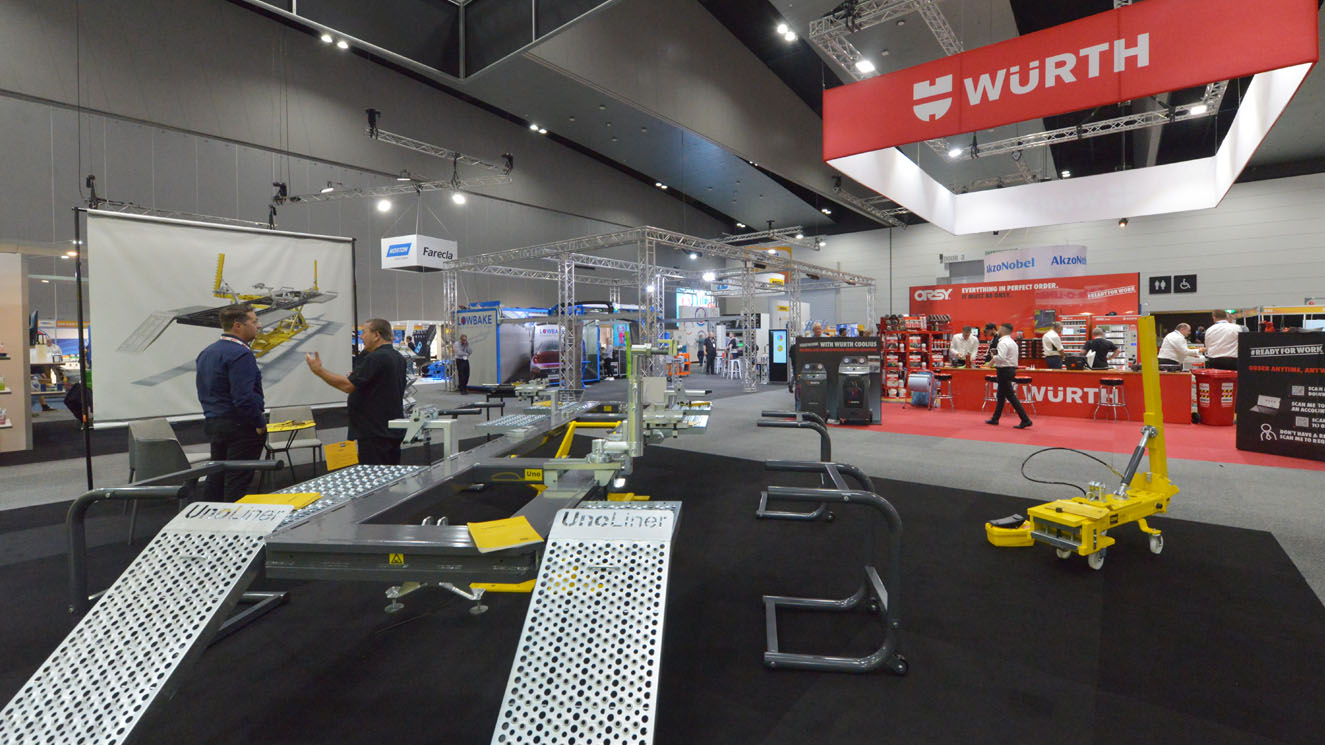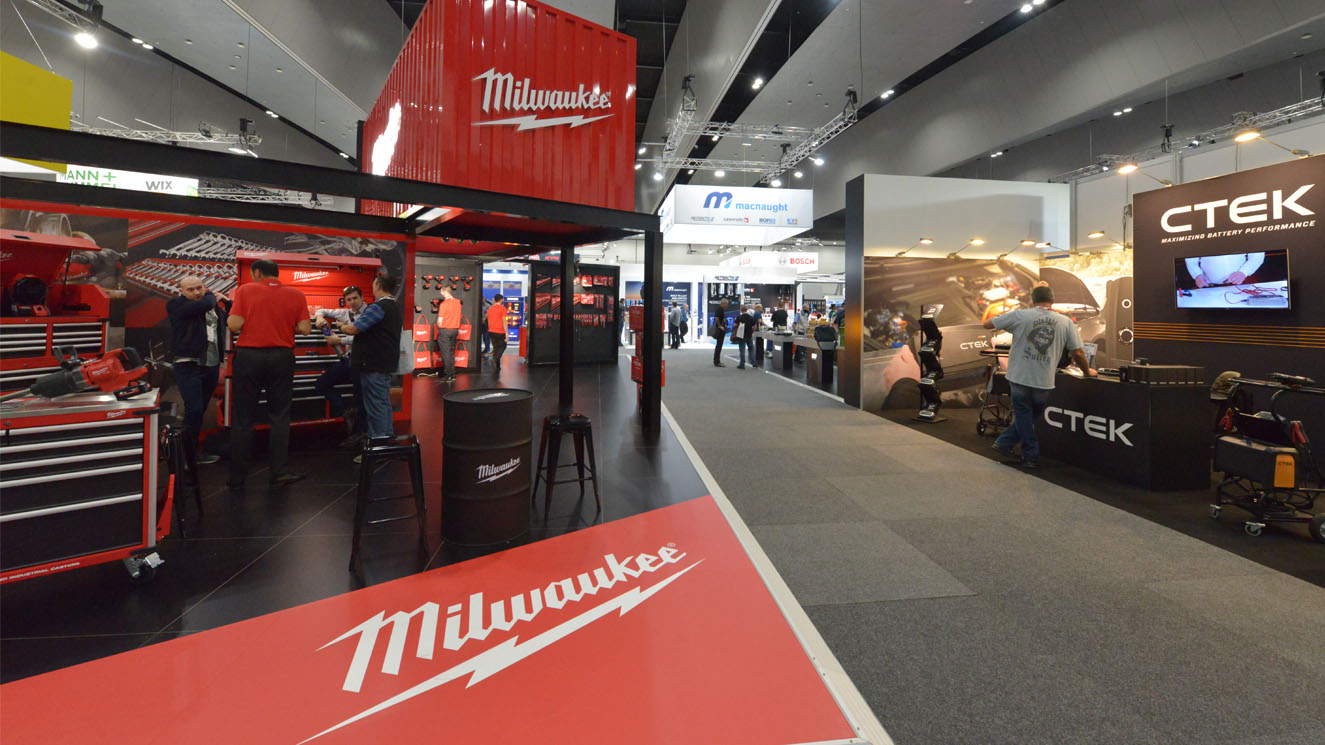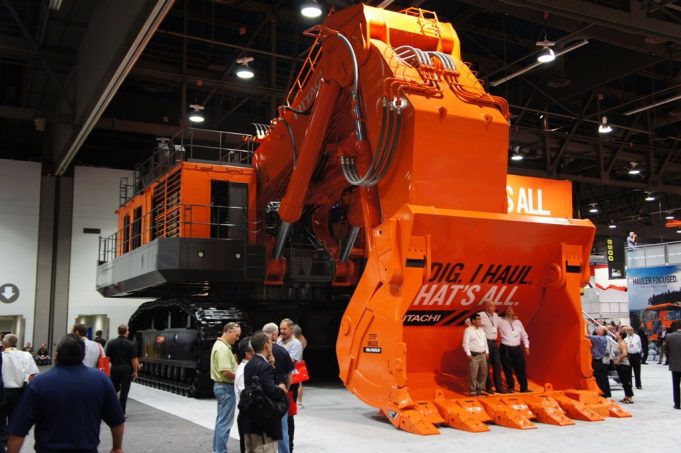25 November 2022
The value of trade shows is constantly questioned by management teams due to their high expense and the difficulty measuring return on investment.
In recent years the rise of digital marketing with its promise of providing detailed analytics and impressive charts has put pressure on trade shows to justify their value. In this video, B2B Marketer Justin Wearne, Principal Consultant from JWPM - Industrial Strength Marketing - examines the question "Are Trade Shows Worth It?" by visiting a trade show and asking exhibitors their opinion.
What is a Trade Show?
Finding consistent definitions is difficult (looking on the internet) however most classify Trade Shows as B2B events where company representatives attend to research technology, products and services (i.e. potential buyers). An event is called an Exposition when it is open to the general public.
Conferences are another form of industry event and are sometimes associated with a Trade Show , or at least have a smaller exhibition component that attendees can inspect when skipping some conference sessions or during breaks.
This article is specifically discussing Trade Shows and in the context of selling made to order (bespoke), big ticket items for example machinery, mining equipment, food processing machinery, enterprise security and software solutions, engines and generator sets and similar.
Trade Show marketing
While the internet is a great tool for searching for products and services, it generally works best if you know what you are looking for. If you want to efficiently gain an understanding of what's available, obtain a physical perspective, and obtain an understanding of who the main players are in an industry, attending a trade show can cover a lot more ground far more quickly.
Trade Shows provide the opportunity to physically inspect products; people gain a much better understanding of products when they can see them and can better visualize their potential application.
Many industrial products and services have (compared to consumer markets) a narrow-cast target audience; Trade Shows are effective at connecting a (comparatively) small number of suppliers with an equally small number of potential buyers.

A trade show is usually held inside a large purpose built exhibition space and consists of hundreds of brightly lit, colorful, and impressive exhibits where an organization's products and services are displayed ("showcased" is the popular term). Company representatives are on hand to engage with trade show attendees to provide information and capture contact details.
Trade Shows often also have a business socializing component providing reception morning teas, lunch events, and evening cocktails and dinners. Trade Shows are just as much about people as they are about products and brands.
For many industrial companies the trade show is one of the most significant cost items in the selling budget.
Unlike consumer marketing that relies on mass communication, specialized equipment or services tailored to a narrow range of industries can reach a significant percentage of likely buyers far more efficiently and with greater impact using trade shows.
...and this is why trade shows are the major, if not the only, form of marketing communications activity for many industrial sellers.
This would tend to suggest that trade shows are worth it - otherwise, why spend the money?
Trade Shows - what do they cost?
Cost is related to how much space you purchase and what you do with that space.
Entry level:
The majority of trade shows have standardized on a minimum booth size of 3 metres X 3 metres of floor area. It varies widely from show to show, but as a rough guide $400 per square metre is a useful ball-park. At many smaller trade shows the majority of booths are 3 X 3 with the occasional 6 X 3 display.

A 3 X 3 booth will therefore cost about $3,600 (+GST). However, buying the floor space is just the beginning. Even for the smallest booth, the display will cost roughly $5,000. Whatever special equipment you want to display comes at a cost, even if only for transport. Then there is the cost of providing company representatives to attend the show - salaries and wages, and often airfares and accommodation.
Middle of the range:
At larger trade shows, the majority of displays have much larger footprints. The people I interviewed (video above) mostly had stands 10 times that size and spend roughly $80,000 to $150,000 (total) per trade show.

The Upper End:
Large global companies will typically spend up around $250k to $500k per show. Companies operating at this scale typically have a traveling road show approach sending a trade show crew from trade show to trade show often spanning many countries with a fully containerized display system. They would hope to amortize their investment in their display system across many important shows, but still incur large costs in buying floor space, transport cost, bump-in and bump-out and people costs.

The Extreme End:
At the world's largest trade shows you see some truly awesome displays like actual ship diesel engines , aircraft, giant mining equipment etc. The accompanying display systems often include 2nd levels housing cafe's, theatrettes, discussion rooms, and even bars with bands playing.

Measuring return on investment (ROI)
The time honored method for killing proposed marketing expenditure is to ask the question "if we spend this money, what will be our return on investment?" - it's a question nobody can answer with anything other than educated guess work.
The big promise of digital marketing is the ability to produce detailed charts, graphs, and impressive statistics that claim to enable you to optimize your campaign spend toward the best performing advertisements, delivery platforms, search terms, time period, target audience and more. These platforms can even auto-magically capture your sales results and automatically optimize campaigns to improve performance.
A fully integrated end-to-end inbound digital delivery platform INTEGRATED WITH a shopping cart website WILL deliver accurate ROI results; this is digital marketing at its finest.
The problem is...
- Selling big-ticket bespoke equipment and solutions has no online shopping cart.
- They work best for pure e-commerce applications where sales data is collected in a cloud platform (shopping cart) that can be integrated with the advertisement delivery platform (paid search and digital advertising).
- Most of the digital marketing optimization and ROI hype is based on this model
- Much of the claimed benefits of digital marketing is based on USA statistics where huge sales volumes can achieve statistically valid data sets that override the effect of outliers.
- They work best for short sales cycles. For extended sales cycles its impossible to eliminate the effect of other sales and marketing activity on the final sales outcome.
This is not to say that digital marketing is any less effective than any other form of marketing; just be wary of the tracking and optimization claims particularly in B2B marketing.
The ROI problem has always existed for trade-shows. When exhibiting large capital equipment (transport equipment, manufacturing machinery, industrial processing machinery etc.) rarely will someone pull out a cheque book at the show and buy off the stand. If they do, it will be after a long period of specifying, consideration, and negotiation preceding the show and signing at the trade-show is done as a bragging-rights ceremony.
The Attribution problem
Attribution is a term that describes the matching (attributing) of a sales outcome (revenue) to a promotional technique. We all want to know what promotional technique works best, so we can optimize where we spend advertising dollars.
To accurately give credit to a promotional technique for directly generating a sale requires firstly tracking the sales lead noting the form of promotion that generated it, and then when it converts to a sale recording somewhere the sales revenue achieved. Attribution becomes harder as sales cycles lengthen.
Sales cycles are lengthened by the need for customization, technical evaluations, the need to test the market (compare competitors offerings), seeking internal approval - the usual procurement processes used by organizations making significant capital purchases.
In B2B marketing, the average sales cycle is greater than 6 months.
By the time the first invoice is issued many organizations will not be able to remember where the original lead originated from, and even if they have evidence there will still be argument around what sales and marketing activity contributed to kicking the deal over the line.
The reality is all forms of marketing behave synergistically - sometimes the Trade Show will have generated the original lead, sometimes it will be instrumental in building the credibility of the company (brand building), thus being an important influence. Both have value that you wouldn't want to lose through an overly simplistic ROI attribution model.
The marketing synergy problem
But, its more complicated than that; ALL marketing activity contributes to brand awareness and perception and that has a huge influence over the effectiveness of promotional activity.
A person may see a firm's advertising, PR, sponsorship, or even vehicle signs without taking action, but finally take action on the last view. All of the previous exposures had an influence.
Further, what value do you place on not just achieving the first sale but the future sales (which could extend years in to the future) achieved by introducing a new customer to the business?
And still further, brand building and promotional activity are also instrumental in customer retention, cross-selling, and up-selling.
This isn't an insoluble problem - it's just that very few organizations are set-up to track attribution accurately and consistently.
Asking the question "what ROI will be achieved from X investment in Y promotional activity (like a trade show)?" assumes that each form of promotional activity acts in ISOLATION.
The best you can do is to measure cost per lead knowing (and remembering) that...
- Not all leads have equal present or future value.
- It's naive to think that years of building the brand and other promotional activity had no impact
Keep reading because further down we provide a better solution tor estimating ROI and being able to work out "was that a great trade show or a poor trade show?"
Don't under estimate the value of building business relationships
Many a seasoned B2B marketer has that legendary trade show story; the one ending-up in a bar somewhere where liver function was subjected to heavy duty non-destructive testing. This is a contentious topic where the objectives of the finance department, people and culture, and sales and marketing don't always align.

However, seasoned sales people (or their more lofty counterparts "business development managers") understand the value of building strong business relationships. And it comes down to trust.
In every business transaction, particularly those involving large sums of money, there are many problems that can be solved through having a strong business contact somewhere close to, or near enough to, the deal who can be communicated with to help supply important perspective, a temperature reading, or a problem solving intervention that keeps the deal on track.
Experienced long term players in B2B marketing usually have in their phone a substantial list of well placed industry people who will answer their call on first attempt.
The conversation may well reference "remember that time at the XYZ Trade Show when we ended up at...."
Strong business relationships don't have to be cold-forged over ice-cubes, they can be built on hot-coffee - however, trade shows are great places to meet new people in the industry and strengthen the relationship over time.
In these more constrained, puritanical, and risk averse times we tend not to talk about business socializing over drinks and avoid words like alcohol except in carefully worded corporate policy documents. And yet, we implore sales people to "get out and meet some new customers."
Trade Show Marketing - does size matter?
The size and impressiveness of the Trade Show stand tends to be thought of as a corporate virility symbol.
The facts are, large multi-national corporations exhibiting at trade shows will have the largest and most impressive stands. In some ways they are trapped into doing this because attendance at the flagship trade shows is mandatory and any hint that this year's display is less impressive or smaller than last years will start the rumor mill running.
More than one company has grown its market share by punching above its weight in trade show investment.
Trade Shows are just as much about brand building as they are about product demonstration and lead capturing.

The importance of follow-up
A typical trade show can generate a few hundred business leads.
Of course, these leads will vary in quality from complete time wasters to possibly being the next anchor and or business changing customer. The follow-up process reveals which they are.
Firstly, you need to define what a legitimate lead is. There are many stories of the jaded sales representative manning the trade show stand who brushes off the Chief Executive of a potentially huge future customer because he poorly judged how the conversation was going and thought the person was just a tyre-kicker.
However, everyone who stops by the stand should be treated as a potential future customer until proved otherwise.
The follow-up process qualifies the leads.
Typically from a few hundred names collected during a trade show...
- 6% (roughly 20) will be "hot" leads (ready to buy and want to engage)
- 30% will be in the early stages of research and discovery but not ready to engage in a buying process.
- The rest will be of varying levels of lower quality and relevance but still worthy of being on the mailing list.
But, if you don't follow-up you will never know. You would finish the trade show knowing who the obvious hot leads were. Common sense suggests you'd chase them-up first. But, hidden amongst the less exciting leads may be some hidden gems.
It's very common for this follow-up to either never take place, be left too long, or be brushed over without sufficient diligence.
Why? Because trade shows take time to organize and take the sales team out of the office. When they get back to the office they are immediately distracted returning calls, attending to customers, other sales enquiries, and completing overdue quotes.
300 leads from a Trade Show investment of $80,000 is $267 each. Which compares well to other forms of promotion.
If you want to protect your investment, ask for a report 30 days after the trade show...
- List every lead collected.
- Who were they, where do they work, what is their business title?
- Mobile phone number
- When were they contacted. Who contacted them?
- What was the result? What are they interested in?
- What is the estimated value of any identified opportunity?
- What is the next step?
- Ranked from highest quality to least.
Do not approve annual leave for sales reps for the weeks following a trade show.
Assuming you are the business owner or senior executive asking for this list, let the sales team tasked with producing this list know that you will be contacting 3 of the people on the list to "introduce yourself and have a chat." Hence, why you need their mobile phone number.
This simple step will enhance the quality of the list.
Trade shows, follow-up and return on investment
So we outlined the problems of calculating return on investment above. But there is a rough solution that works.
The follow-up process qualifies the leads and produces a list of outcomes. Which leads collected from the show are ready to buy now, soon, in the future, or possibly never?
Done properly, the follow-up and lead qualifying process should enable the experienced sales professional to estimate the value of the lead, the best guess of the time frame (all going well, when could we expect an order?) and the probability of this happening.
A sales lead with an estimated value of $1 million with a probability of 50% is worth $500,000.
Adding up the probabilistic values of all the sales leads provides the answer to the question "what did we get out of that trade show?"
Companies in the B2B space that use trade shows as a primary form of marketing will always be able to quantify how well the trade show went...
Great trade show! We identified $2.8 million dollars of potential business.
...and they will be able to table a list of qualified leads with potential sales details that substantiates that claim.
Advantages and disadvantages of Trade Shows
ADVANTAGES:
- Provide immediate conversations with potential buyers (rather than sifting through and following-up inbound leads)
- Strong source of qualified leads for immediate follow-up (hot leads/identified project)
- Great source of sales leads that, even if not hot leads, are suitable for adding to the list for future outbound marketing
- Building brand awareness and profile in the industry (supports other sales and marketing efforts)
- Excellent networking opportunity to build useful business contacts and strengthen existing relationships
- Opportunity to obtain industry gossip informing further research to identify sales opportunities
- Market research in general - customer in-sights, industry pulse and temperature readings, competitor intel, new trends, and new ideas (you can get this simply by attending, you don't have to display).
- Product research: conversations with visitors asking questions about your displays (products) can provide valuable feedback and inspire further product development
- Good place to launch new products and innovations
- For distributors, good place to identify potential products and brands to represent
- Similarly, a great place for manufacturers to identify potential distributors. Exhibiting at overseas trade-shows is often used by Australian manufacturers to find in-country import-distributors.
- For industry professionals new to the country, can provide an excellent briefing on the local market
- Talent recruitment. Seeing people in action on a display stand and talking with them is a great way to spot potential new employees
DISADVANTAGES:
- High cost both in expense and staff time (and not just for manning the stand - but also in project management time preparing).
- Position at the show is important. Not everyone can be well positioned (book early).
- Uncontrollable events (economic crash, airline strike, bad weather, calendar conflicts, or other unforeseen crisis) can adversely impact. Trade shows are planned months but usually years ahead.
- Finding suitable product to display is often difficult particularly for bespoke (custom made) equipment.
- Often the enthusiasm and interest displayed by stand visitors during the show doesn't translate into reality after the show.
- Maintaining fresh, impactful, and relevant display material. Bump-out can be particularly hard on display signage and kit "let's get the hell out of here!"
- Often difficult to find the time to implement follow-up after the show.
- No shortage of options. There are many shows on the calendar all claiming to be the best. It can be difficult to pick the winners.
- Unpredictable outcomes particularly when trying a new show
- No guarantee that enough of the right customer targets will attend the show - you can't make them visit
- Difficulty justifying the cost using an ROI model that stands scrutiny.
